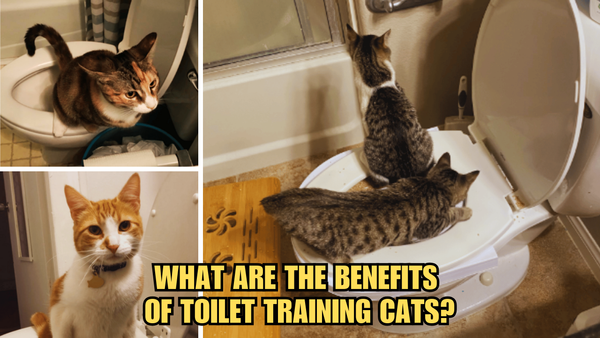Key Takeaways:
- Versatility of Pet Doors: Dog doors aren't just for dogs; cats can also use them effectively.
- Training is Crucial: With the right approach, most cats can be trained to use a doggy door.
- Safety and Security: Considerations for safety and security are paramount when allowing your cat to use a doggie door.
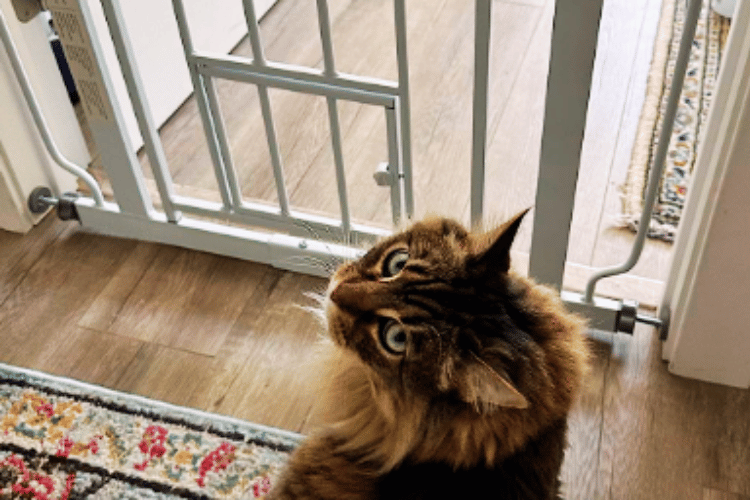
Understanding Pet Doors: A Basic Overview
Pet doors, commonly referred to as dog doors or cat flaps, are designed to offer pets the freedom to access the outdoors without requiring assistance from their owners. These openings can be installed in various locations around the house, such as walls, doors, and even windows. The primary function of a pet door is to provide a secure and convenient way for pets to enter and exit the home as they please.
Are Doggie Doors Suitable for Cats?
The question of whether a cat can go through a doggie door often arises among pet owners who have both cats and dogs. The simple answer is yes, most cats can indeed use a doggy door designed for small dogs. However, the size and type of the door, along with the cat's personality, play significant roles in this capability.
Size and Safety Considerations
When considering a doggie door for a cat, size is an essential factor. Doors designed for large dogs may be too intimidating or physically challenging for a cat. Conversely, pet doors intended for small dogs or puppies are usually a good fit for most cats. Safety is another critical consideration; ensuring the door is securely installed and located in a safe area is crucial to prevent accidents or unwanted visitors, such as other animals.
Choosing the Right Doggie Door
Selecting the appropriate doggy door involves considering the magnet strength and lock mechanisms. These features ensure that the door flap remains closed when not in use and that it is not too heavy for the cat to push open. Brands like Endura Flap offer products specifically designed to cater to both cats and small dogs, providing ease of access and security.
Installation Locations
The location of the pet door is pivotal. Installing it in a low-traffic area where the cat feels safe and comfortable is ideal. Common installation spots include a back door leading to a fenced yard or a door that opens into a garage. The key is to choose a location that minimizes potential hazards and maximizes ease of access for the cat.
Installation Tips
Proper installation is crucial to ensure the pet door functions correctly and remains durable. It's often recommended to hire a professional to install the door, especially if it requires creating a hole in a wall or a special type of door. Ensure that the edges are smooth and that the door is installed at the right height for your cat to comfortably pass through.
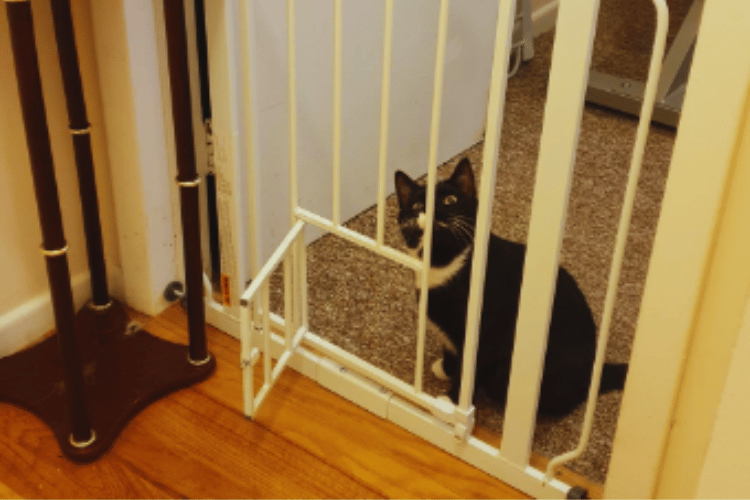
Adapting Dog Doors for Multiple Pets
When considering a dog door that might also be used by cats, it's essential to think about the dynamics of multiple pets sharing the same entry point. Many cats and dogs can coexist peacefully, but the introduction of a shared door can bring about new challenges and opportunities. For instance, ensuring the door is accessible to all pets but not too large to compromise home security is crucial. A good solution might be adjustable flaps or doors that can be set to different sizes depending on which pet is using it.
Moreover, the placement of the door can affect how comfortably pets share it. If a dog door is installed in a main living area, it might be more disruptive than one placed in a less frequented part of the home. Cats particularly might be hesitant to use the door if it's always bustling with activity or near the puppy's favorite play area. Strategic placement, possibly near quieter parts of the house or where each animal spends most of their time, can help in making the pet door a success for both cats and dogs.
Customizing Cat Flaps for Different Breeds
When considering cat doors, it's essential to think about the specific needs of different cat breeds. Larger breeds like Maine Coons might require wider flaps compared to a petite Siamese, which means the standard doggie door might not be the best fit. The idea is to ensure that the door opening is both comfortable and safe for your pet to use without any strain. Measure your cat’s height and width at the widest point, and compare these dimensions with the door specifications to ensure a good fit.
Moreover, the type of cat flap installed can greatly influence the ease with which your cat adapts to using it. Some cats might be intimidated by a door that swings too quickly or makes a lot of noise. In such cases, opting for a door with adjustable swing settings can be a great idea. This customization not only caters to the physical attributes of different breeds but also to their varied temperaments, making the transition smoother and less stressful for your pet.
Deciding on the Best Location for a Cat Door
When considering the installation of a cat door, deciding on the optimal location is crucial. It's not just about cutting a hole in any exterior or interior door. Think about your pet's routine and safety. A low-traffic area where the cat feels secure and can escape quickly if needed is ideal. Additionally, ensure the chosen spot is away from main roads to minimize the risk of accidents if the door leads outside.
Furthermore, the floor type where the cat door will be installed matters. Hard floors like tile or wood can make it easier for your cat to move in and out, unlike carpeted areas that might hinder the flap's movement. Ensure the area is well-lit, so your pet feels encouraged to use the door both during the day and at night.
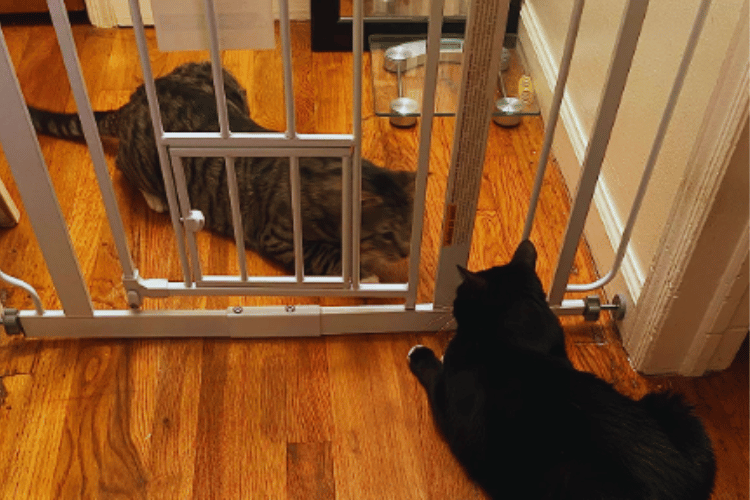
Adapting Training Techniques for Different Cat Personalities
When it comes to training your cat to use a doggie door, understanding your pet's unique personality is crucial. Cats, much like people, have diverse temperaments and learning preferences. For a pet wearing its independence proudly, a direct approach might work best, where you allow them to explore the doggie door at their own pace. Observing your cat’s behavior closely can help you decide the best method to encourage them. Some cats might be motivated by treats or favorite toys placed on the other side of the door, while others may prefer gentle coaxing and more time to adjust.
On the other hand, shy or hesitant cats require a different strategy. These cats often benefit from a gradual introduction to the doggie door, with each step accompanied by lots of praise and reassurance. You might start by propping the door open and encouraging your cat to peer through. Gradually, as they become more comfortable, you can train them to push the door themselves. Remember, patience is key. Each small victory is a step forward in their training, and with consistent effort, even the most timid cat can learn to navigate a doggie door confidently.
Decision-Making Factors for Installing Multiple Pet Doors
Deciding to install multiple pet doors can seem daunting, but it can provide significant benefits for a household with various types of pets. When considering this, think about the traffic flow of your pets and how they interact. If you have a cat and a dog, installing separate doors might reduce congestion and prevent any potential scuffles at the doorway. Additionally, different species might require different types of doors based on size and safety needs, which is an important factor to consider.
Moreover, the decision should also take into account the layout of your home and the pets’ access needs. For instance, if your cat enjoys frequent outdoor visits during the day but stays indoors at night, while your dog perhaps only goes out a few times, separate doors can accommodate their distinct routines without disruption. Each pet wearing its own access badge in the form of a microchip or magnetic collar can help in managing their comings and goings efficiently, ensuring that each pet enjoys freedom while maintaining household order and safety.
Training Your Cat to Use the Door Without a Cage
Training your cat to use the new cat door can be a challenge, but with patience and the right approach, it can be done smoothly without the need for confining tools like a cage. Start by propping the door open and using treats to lure your cat through it. This method helps the cat associate the door with positive experiences. Gradually, as your pet becomes more comfortable, you can begin to lower the flap over successive training sessions.
Another effective technique involves putting a favorite toy or a bit of food on the opposite side of the door to encourage exploration. Remember, every cat is different, so you might need to adjust your approach based on your pet's personality and preferences. Consistency and patience are key — don't rush the process, and provide plenty of praise and treats to reinforce positive behavior.
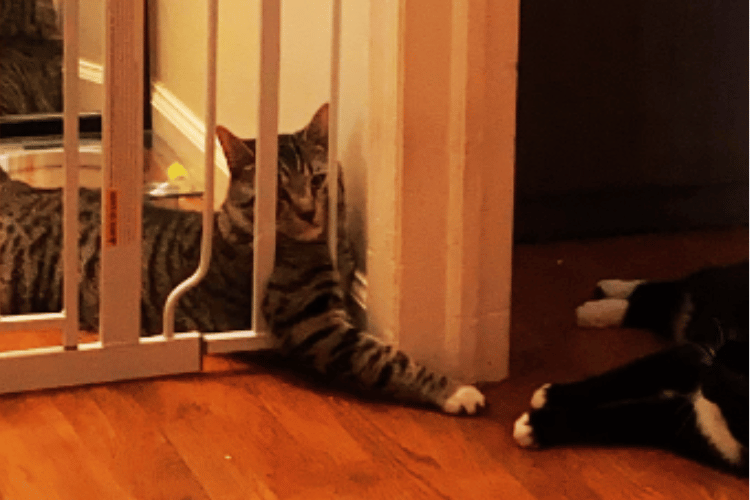
Innovative Training Tips for Kittens Using Cat Doors
Training kittens to use a cat flap can be a delightful yet challenging task. Starting early is a key component, as kittens are naturally curious and more adaptable to new experiences. Begin by propping the door open slightly to pique their interest. Using treats or their favorite toy, lure them through the door gradually, first just to reach a paw through and then to pass completely through. This method helps build their confidence and familiarity with the cat flap.
Another effective training tip is to use positive reinforcement consistently. Every time your kitten successfully uses the cat flap, reward them with a small treat or affectionate petting. This not only reinforces the behavior you want to teach but also associates the act of passing through the cat flap with a positive outcome. Remember, patience is key, and every kitten will learn at their own pace. Keep training sessions short and enjoyable to maintain their interest and prevent any negative associations.
Integrating Play and Practicality
Integrating a pet door into the life of your cat doesn't just serve the practical purpose of letting them roam or hunt; it can also enhance their playtime and stimulation. Consider hanging a toy near the dog door to pique your cat's interest and encourage them to pass through. This method not only makes the training process more enjoyable but also helps your kitty associate the new door with positive experiences and rewards.
Another creative approach is to place their litter box or favorite treats on the other side of the door, prompting them to use the flap whenever they need to use the box or want a snack. This tactic not only teaches them how to use the door but also integrates it into their daily routine, making it a part of their world. Over time, the door becomes less of an obstacle and more of an edge that offers freedom and fun.
Training Your Cat to Use the Doggie Door
Training your cat to use a pet door can be a straightforward process with the right techniques. Start by keeping the door flap open and enticing your cat with treats or toys to walk through the opening. Gradually, let the flap down and encourage your cat to push through it using positive reinforcement.
Keeping Training Sessions Short and Positive
It's essential to keep training sessions short and enjoyable. Cats respond well to positive reinforcement, so offering treats and praise when they successfully use the doggy door can be very effective. Patience is key, as some cats may take longer to get used to the new entryway.
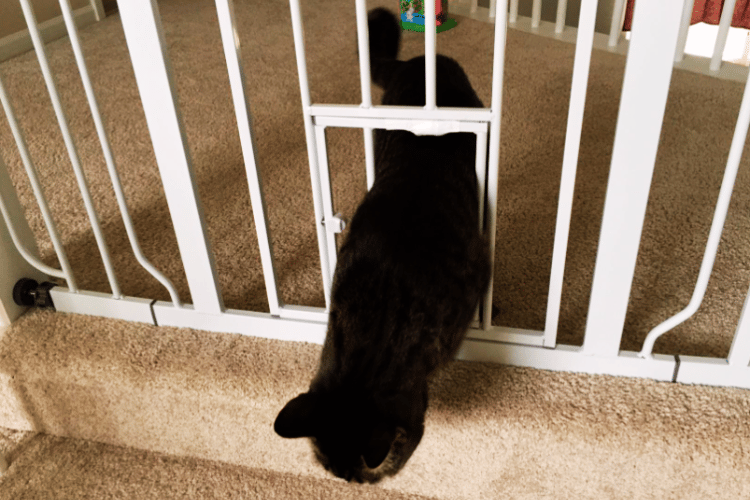
Benefits of a Pet Door for Cats
Having a pet door provides numerous benefits for both cats and their owners. For indoor cats, it offers an opportunity to explore the outdoors safely, which can be enriching for their mental and physical health. It also provides convenience for owners, as it reduces the need to constantly open doors for their pets.
Risks and Precautions
While pet doors offer convenience and freedom, they also come with risks. It's important to ensure that the outdoor area is secure and that there are no threats from other animals. Additionally, consider a pet door with a locking mechanism to control when your cat can use it, especially at night or when you're not home.
Alternatives to Traditional Doggie Doors
For those who may not want to install a traditional doggie door, alternatives such as electronic doors activated by a collar or microchip offer added security and convenience. These doors ensure that only your pets can use the door, keeping out wildlife and stray animals.
DIY Solutions
If you're handy, creating a custom solution that fits your specific needs and the personality of your cat can be a rewarding project. DIY pet doors can be made to fit into various parts of the house, such as a window or an interior door, providing flexibility and personalization.
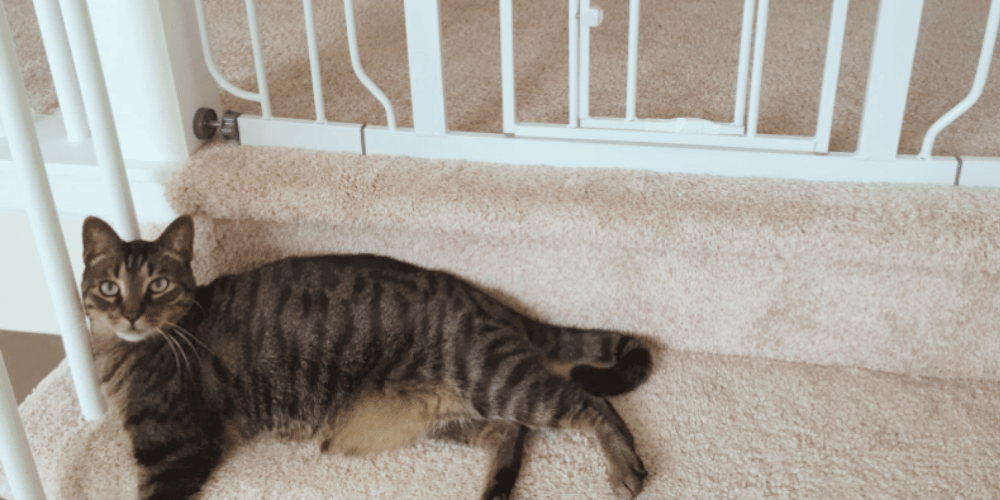
Summary
In conclusion, cats can indeed use doggie doors, provided they are the appropriate size and type. Training your cat to use the door, ensuring it is safely installed, and considering electronic or custom alternatives can enhance the functionality and security of pet doors. With patience and the right approach, integrating a doggie door into your home can greatly benefit both your feline friend and your family.
FAQ
Q1: Can all breeds of cats use a doggie door? A1: While most cats can use a doggie door, breeds vary in size and temperament, which can affect their ability to use certain types of pet doors. It's important to consider the specific needs and characteristics of your cat's breed.
Q2: Are there any special types of doggie doors that are better for cats? A2: Yes, doggie doors that feature adjustable magnet strength, smaller flap sizes, and locking mechanisms are often better suited for cats. Brands like Endura Flap are known for their versatile and secure pet doors.
Q3: How can I ensure my cat's safety when using a doggie door? A3: Ensure the pet door is installed in a safe location, consider using doors with electronic locks, and keep the outdoor area secure. Additionally, monitor your cat's activity until you are sure they can use the door safely.
Thank you for visiting LegitLists we hope this helps you make a legitimate choice!






